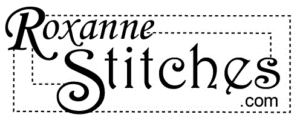Hi Everyone!! I know it’s been a while since I last posted, shared a video or a project. Thanks for all the kind messages and emails wondering where I’ve been. Summer was winding down and I was spending time with my Wonderful Son!! He’s at an age that he still wants to hang out and do things with me, so I was enjoying that time with him while I still have it!! I’m sure many of you are parents and can understand juggling work, play and blogging.
Of course using just regular sewing thread with a decorative stitch is pretty fantastic all on it’s own, but to me, decorative stitching goes hand and hand with decorative threads. Here’s some of my embroidery thread stash on a thread rack my husband made for me. They are mostly Madeira Rayon 40wt and Robison Anton 50wt. There are a few orphans sprinkled in as well.

If you’ve dipped your toe into machine embroidery at all, you’ve found a wonderful selection of threads on the market. From metallic to rayon’s to variegated, the list goes on and on.






The more you explore your deco stitches, the more your excitement will grow, believe me. They add so much to any garment or project that it’s worth exploring your options. Have fun and play around with your decorative stitches. As you can see, there are many thread manufacturers to choose from. I don’t endorse any particular brand of thread and my machines are not picky about the threads I choose to use. Many sewing machine manufacturers will recommend specific thread brands to use in their machines, so be aware this may apply to your machine. Even if you don’t have a machine with lots of different stitches, just by using unique threads, changing your stitch width or length or using a twin needle can give you lots of options.
TIP #1: Choose your test fabric wisely. By this I mean, use a nice woven fabrication to experiment with. Don’t choose something right out of the gate that could be troublesome like chiffon or a knit. I LOVE to embroider on Denim. It always looks great and it a stable fabric that’s perfect for practicing.
Tip #2: Always make sure to interface all areas that you plan to do decorative stitching on. Just as in machine embroidery, it’s important to stabilize your fabrics so your stitches will look even and not puckered.
TIP #3: If your stitches don’t cover well, thread your machine with 2 spools of thread. Many decorative stitches don’t look as close together as we may like them, when using finer 40wt or 50wt threads. If you thread your machine with 2 spools of thread, it will look heavier and you will cover more of the surface of your fabric. I used this technique when I created the fringe for my Picture Tutorial: Creative Fringe, but I used my Singer L-500 for this demo. Give it a try!!

I hope by watching this video that it will get you excited about trying out the decorative stitches on your machine. You can achieve an infinite amount of stitch patterns by modifying the stitches in width and length, using the built in edit options, stacking or mirroring and combining different stitch patterns together. Be fearless and try some decorative threads too and have a good time with it!!
Thanks again for all the messages and emails of support!! I appreciate it and LOVE to hear from YOU!!


Thank you for showing the decorative stitches on your machine. I found it very informative. I'm now looking at my 20+ year old machine in a different light. It has some decorative stitches, but I never thought of doing some of the tricks you showed! Thanks, love your series!!
Hi Roxanne, thanks for the series, they have been helpful. I recently bought this machine and I'm really happy. My older ones were mechanic. Getting used to this electronic one has been easier than I expected. But I was wondering if I would be able to use my large cones of thread with this machine. You said it's possible with a spool stand, my guess is that the thread would get from above the machine right into n°1. Am I right?
Thanks!!!
You're welcome Miriam!! I'm glad you see you're machine in a whole new light! Enjoy it!!
Hi Sandra!! I'm happy to hear you have this machine and are liking it!! The deco stitches on this machine are really beautiful. I added a picture of the thread stand I use with all my machines. There are many on the market at various price points for you to choose from. Yes you're correct, the thread will come from above the machine right into the #1 thread guide.
Thanks Roxanne!!! I'm on vacation now, but when I get back home I'll get one of those. I think maybe a stand for two threads since I'm planning to explore the possibilities with the twin needle.
Thank you so much! I have learned more about my machine by watching your videos! You are a great teacher! Linda A Bowman WS, NC
Thanks Linda!!